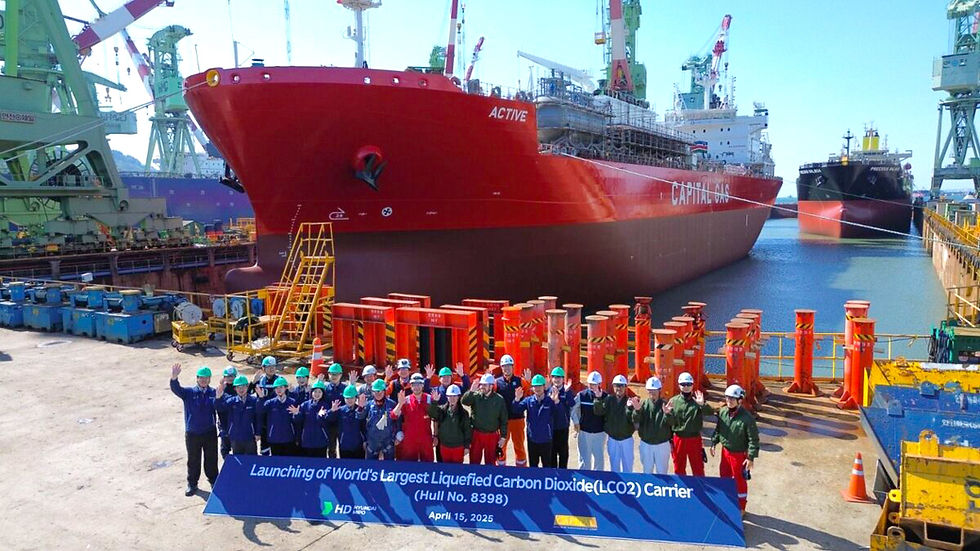Onboard carbon capture to meet stringent emissions-reduction targets and achieve sustainability
- Tseles John
- Jul 15, 2024
- 2 min read

Onboard carbon capture is a solution to meet stringent emissions-reduction targets and achieve sustainability, but many challenges remain to be conquered.
The increasing focus on onboard carbon capture technology as a crucial element in achieving sustainability goals was put under the microscope during a recent discussion* by those taking part in this nascent sector of the shipping industry.
Speaking during a Riviera webinar, American Bureau of Shipping director global sustainability, Shu Yong Koh, highlighted the importance of onboard carbon capture in meeting International Maritime Organization’s emissions-reduction targets.
"The carbon capture carbon levels are expected to surpass the available storage potential by 2025, while the utilisation demand from several industries will increase," Mr Koh noted.
K Line manager of GHG reduction strategy team, Ryo Miyoshi, provided insights into the types of onboard CCS being developed and detailed the factors influencing capture rates, including regulatory requirements, energy resources and available off-loading ports.
"Operating additional boilers and auxiliary engines can result in higher capex," Mr Miyoshi explained.
Despite these challenges, Mr Miyoshi expressed optimism about the technology’s potential, "Onboard CCS has a great potential for achieving a greener and more sustainable future for the marine industry."
Mitsui OSK Lines (MOL) senior specialist technical unit, Motonao Tsuchizawa, outlined MOL’s initiatives, including the installation of the Filtree System, which captures up to 10% of CO2 emissions, which MOL announced in April 2024. He discussed the challenges related to regulatory compliance, capital and operational expenditure, and the CO2 recycling chain.
Another interesting aspect of the webinar was that it highlighted the differences in progress between Europe and the Asia Pacific region regarding onboard carbon capture.
European projects, such as the Northern Lights initiative, are more advanced and are expected to commence full-scale operations before 2030, but in contrast, similar projects in the Asia Pacific are likely to start around 2030.
The webinar opinion poll revealed an overwhelming 93% of participants view CCS as either very important or critical for reducing maritime emissions.
Other takeaways from the poll are that post-combustion systems are favoured as the most promising CCS technology, and practical considerations, such as the availability of shoreside recycling infrastructure and financial implications, are the top concerns for CCS installation.
* The Riviera Onboard carbon capture: Minimising power, maximising capture webinar took place on 25 June 2024.
Webinar poll results
The importance of onboard carbon capture for reducing maritime emissions
Very important: 36%
Moderately important: 31%
Critical: 26%
Slightly important: 7%
Not important: 0%
Carbon capture technology with the highest potential for maritime applications
Post-combustion systems: 55%
A combination of multiple technologies: 22%
Unsure/need more information: 12%
Precombustion systems: 7%
Direct air capture or other novel technologies: 4%
Most important factor for onboard CCS installation
Availability of shoreside recycling chain and CCUS infrastructure: 34%
Capital and operational expenditure: 31%
Regulatory compliance and potential carbon taxation: 18%
Technical readiness and integration with existing vessel systems: 12%
Overall lifecycle greenhouse gas emissions reduction potential: 5%






Comments